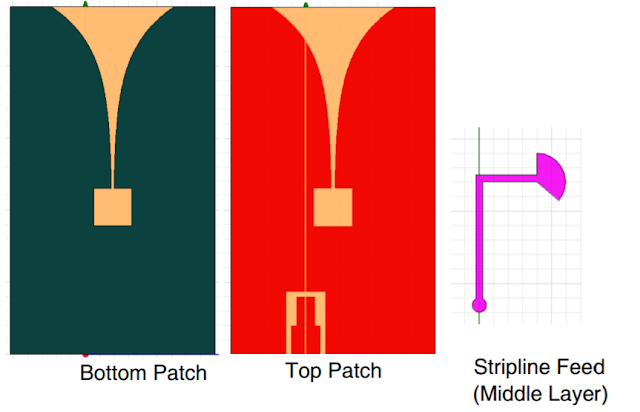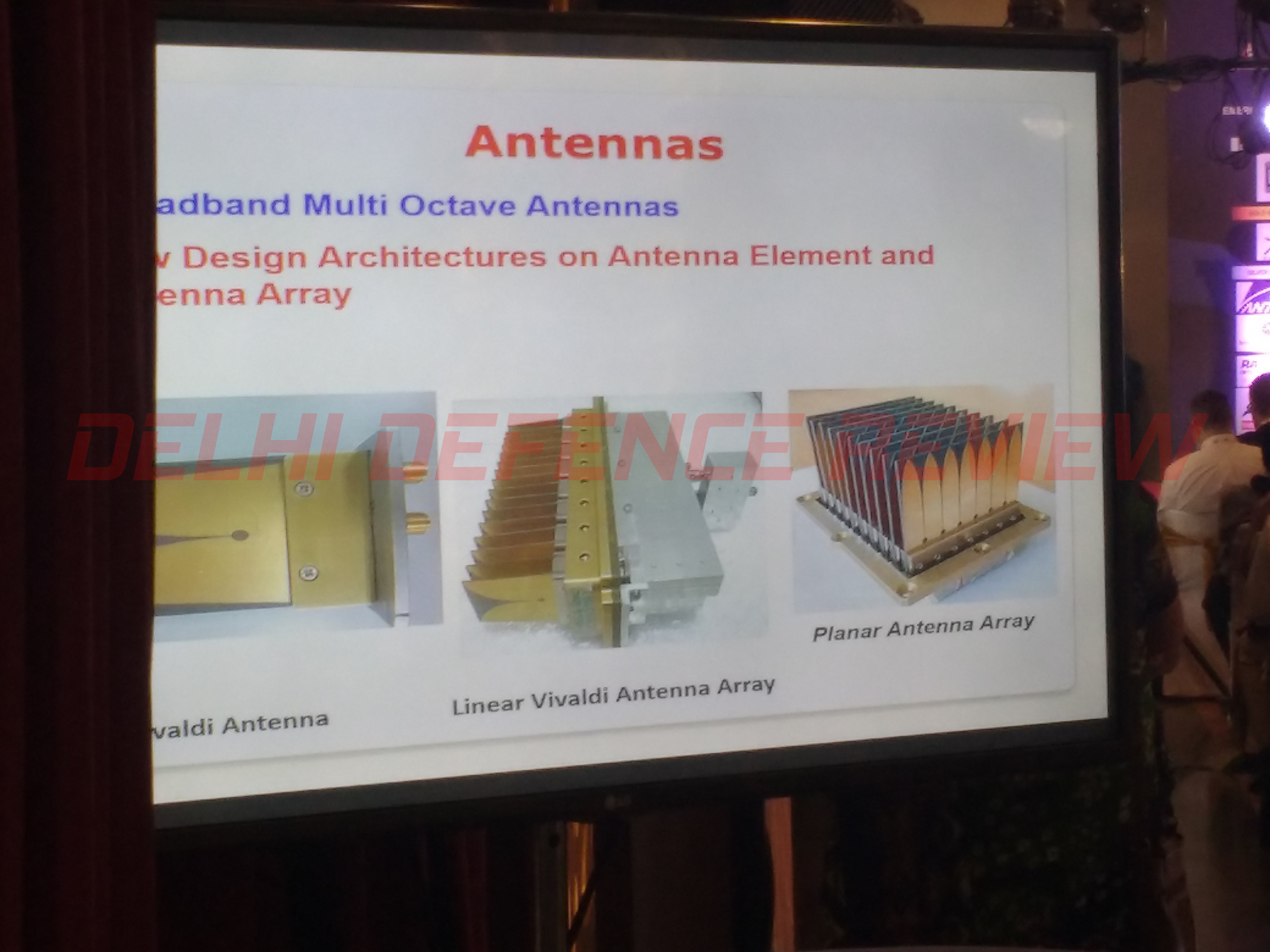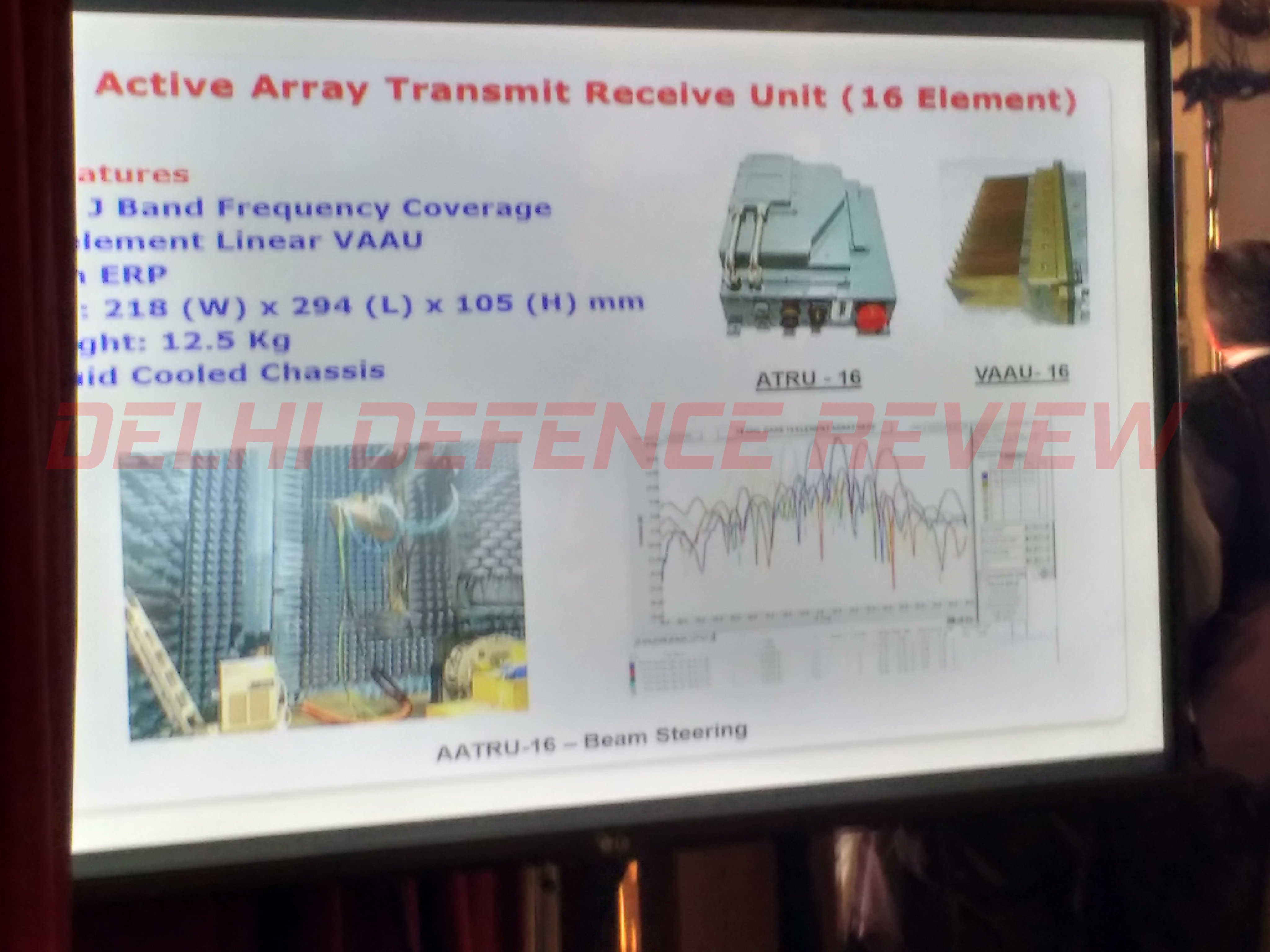 |
| An active phased array radar composed of tapered slot antenna elements (TSA) undergoing testing in an anechoic chamber |
AESA radars are becoming the centerpiece of next-generation sensors suites. This new type of radar has greatly enhanced the situational awareness of modern combat aircraft. An AESA radar offers several advantages over legacy passive phased array (PESA) radar such as- higher range, beam agility, low probability of intercept (LPI), enhanced performance, increased ECCM resistance, high effective radiated power and more. An AESAR has an active phased array antenna composed of hundreds (or thousands) radiating element. These radiating elements are arranged in a geometrical pattern. The most commonly used radiating elements for phased array radar are dipoles, open-ended waveguides, slotted waveguide, microstrip antenna, helix, and spiral antennas.
Electronics and Radar Development Establishment (LRDE) has already developed several advanced AESA radars such as Aslesha, Arudhra, L-STAR, Swordfish LRTR, etc. Currently, LRDE is working on several radars such as Uttam AESA radar, High Power Radar, 360° coverage AESA radar for AEW&CS India and it is also working on some futuristic RF technologies which one day might go into Indian 5th generation Advanced Medium Combat Aircraft (AMCA). One of the new technologies LRDE is working on is shared aperture radar.
What is a shared aperture radar?
In simple terms, a shared aperture radar combines the functionality of multiple antennas into one, for example - using a radar antenna for electronic warfare and long-range tactical communication. The aperture can be shared in multiple ways. One way is time-interleaving, when radar functions aren't being used, the aperture can be used for other purposes. Another way is to subdivide the aperture into smaller segments, with each segment performing a specific task simultaneously, furthermore, each segment can be time-interleaved, for ex. radar segment may have interleaved modes. Finally, a shared aperture may also use multiple independent beams to perform multiple functions simultaneously. The last approach is the most advantageous as well as complex (isolating beams and intermodulation products is a challenging task).
Primary requirements of a shared aperture radar are 1. Wide bandwidth radiating elements 2. Multiple polarizations. Isolating beams and intermodulation products require state of the art filters and amplifiers. LRDE is developing critical components for a shared aperture radar- wideband radiating elements and associated TR module technology.
LRDE developed a 16x16 element planner array antenna to investigate the technology. The small antenna array provided sufficient functionality to study associated radiation characteristics and tradeoffs. Since the primary requirement is wide bandwidth ( >50% of center frequency) and dual polarization, it prevents the use of the common type of antennas such as microstrip patches, printed dipoles, and open-ended dipoles as the bandwidth of these antennas is <=30% of center frequency.
Therefore, TSA (Tapered slot antenna) AKA Vivaldi flared notch antenna was selected. TSA antenna meets all the requirements mentioned above. It has symmetrical radiation pattern, high gain, and wide bandwidth. The most recognizable feature of the TSA antenna is its V-shaped flared notch. The narrower region of the notch radiates RF signals of high frequency, whereas broader part radiates RF signals of low frequency.
 |
| The geometry of Tapered Slot Antenna(TSA)/Vivaldi Antenna |
 |
| Closeup of an active phased array radar composed of X-band TSA radiating elements |
 |
| Due to their excellent wide-band characteristics, TSAs are well suitable for EW applications (Image - Veerendra Pratap Singh @DFI, DefExpo 2020) |
 |
| Actual image of LRDE developed Tapered Slot Antenna (TSA) ( Image of associated MMIC isn't available) |
DRDO has invested a lot of money in gallium nitride MMIC development projects and there are plans to set up a state of the art GaN foundry at IISc. It's likely that TR modules of AMCA's radar will use GaN-based solid-state RF amplifiers. GaN MMIC combined with latest LNA tech will greatly enhance detection range (greater than 200km for a 1 sqm RCS target). It also eliminates the requirement of a liquid coolant circulation based cooling system. Existing radars in IAF service use traveling wave tube amplifier (TWTA) and slotted waveguide antenna (planer array of slots). The bandwidth of these radars is relatively narrow (600-800MHz). More advanced radars such as Uttam and EL/M-2052 have a much wider bandwidth (1-3GHz). A wideband radar using TSA radiating element may have a bandwidth no less than 5 GHz and an enhanced probability of detection+classification and it's much more difficult to jam. The associated wideband/multi-channel MMIC is however very complex and expensive. It is in an early development stage and the technology in question is futuristic. If this radar tech indeed goes to the AMCA, then the development period is perfectly aligned with the timeline of the aircraft being inducted into the IAF i.e beyond 2035.


Comments
Post a Comment